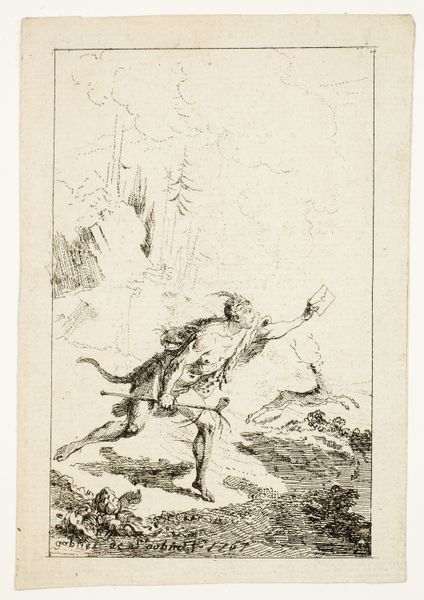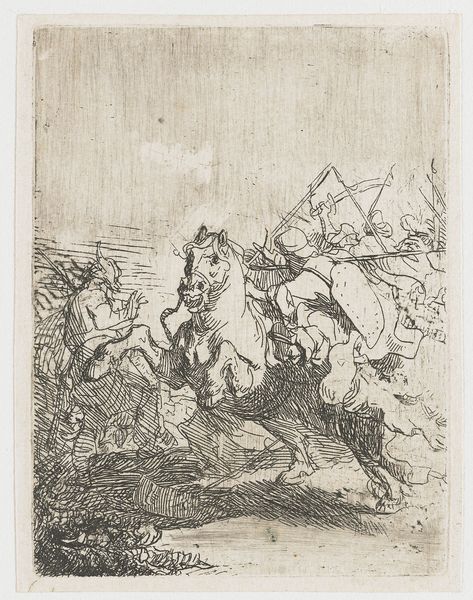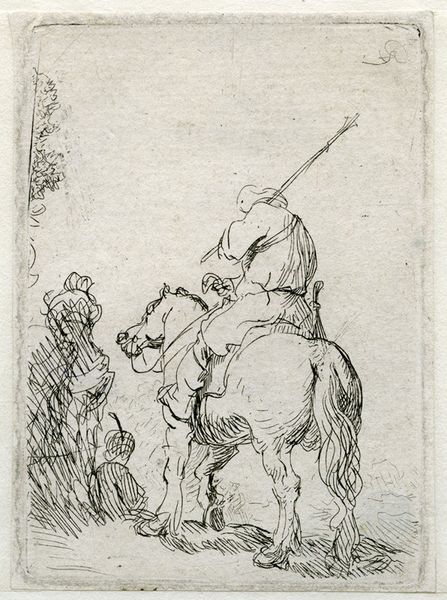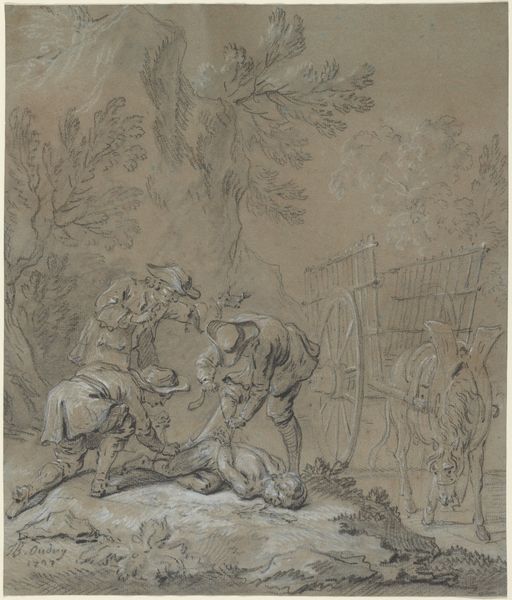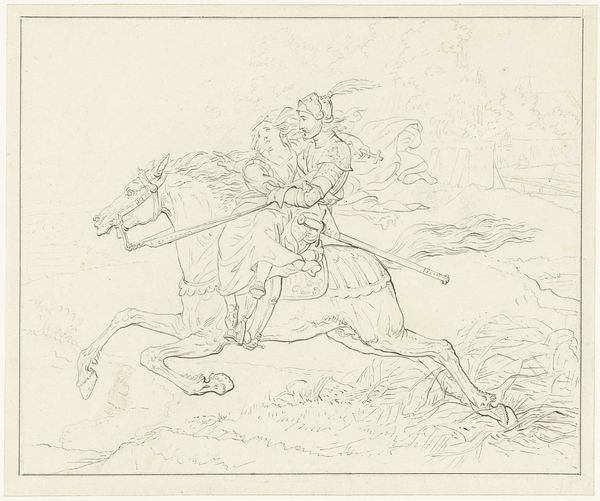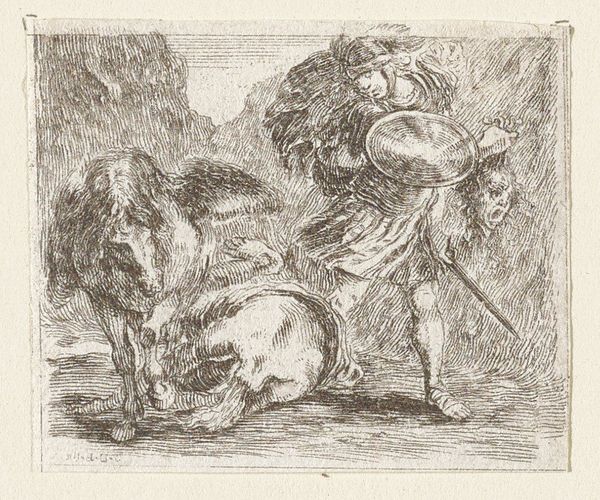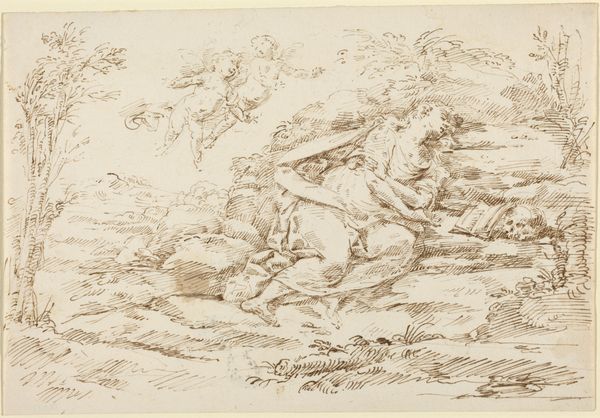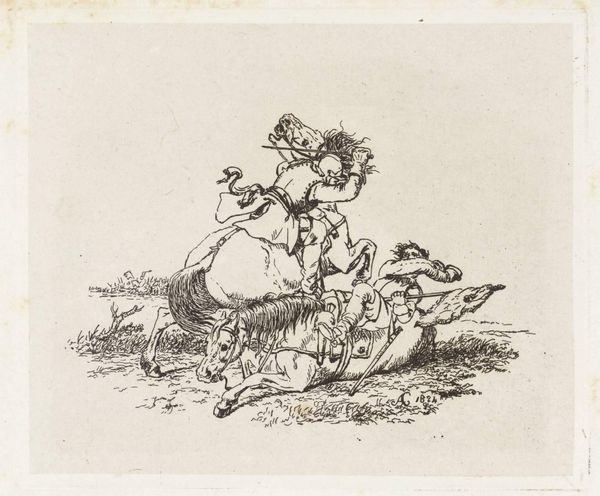
#
quirky sketch
#
sketch book
#
personal sketchbook
#
sketchwork
#
pen-ink sketch
#
sketchbook drawing
#
storyboard and sketchbook work
#
sketchbook art
#
fantasy sketch
#
initial sketch
Dimensions: height 60 mm, width 58 mm
Copyright: Rijks Museum: Open Domain
Curator: Ah, yes, here we have "Ruitergevecht", or "Fighting Horsemen," by Theodoor Schaepkens, dating from 1825 to 1883. It’s currently held at the Rijksmuseum. What strikes you about it? Editor: My first impression is one of raw energy! It’s all swirling lines and implied motion; like a freeze-frame from an epic—but the epic’s happening in someone's imagination. Curator: Exactly! Given the dating, we’re squarely in the Romantic era, and battle scenes were a common motif, carrying ideas of heroism, chaos, and the sublime power of nature and human conflict. Do you notice the figures involved? Editor: Well, I see a knight on horseback, maybe rallying troops with a raised hand—but also someone tumbling below the horse’s hooves. It’s unclear whether it's heroic victory or just plain carnage. And I love how spare the details are! It’s like Schaepkens captured the essence of the struggle, without getting bogged down. It also feels kind of intimate given that it may have come from the artist's sketchbook. Curator: That's an astute observation. Notice the way the ink creates a sense of depth, particularly with the tangled foreground vegetation acting as an anchor. Schaepkens uses the symbolic language of battle not just to depict a historical event, but to tap into something timeless and universal. The sketchbook art emphasizes immediacy and intention. Editor: And it works! The sparseness of the image triggers something in me—it lets my mind fill in the blanks. Are these good guys or bad guys? What caused this fracas? I find myself almost participating in the storytelling. The viewer becomes a collaborator. Curator: Precisely! Schaepkens provides the skeleton, and we, with our own cultural and personal baggage, provide the flesh. The piece lives through our individual readings, echoing themes of conflict that persist through time. It almost becomes a Rorschach test using figures of cultural continuity such as the "knight." Editor: What a fantastic piece, then—a little window into not just history, but how we process it, embellish it, and maybe even how we keep battling the same metaphorical enemies over and over! Thanks for this reading. Curator: Indeed. Thank you! I see now its subtle emotional complexity.
Comments
No comments
Be the first to comment and join the conversation on the ultimate creative platform.



